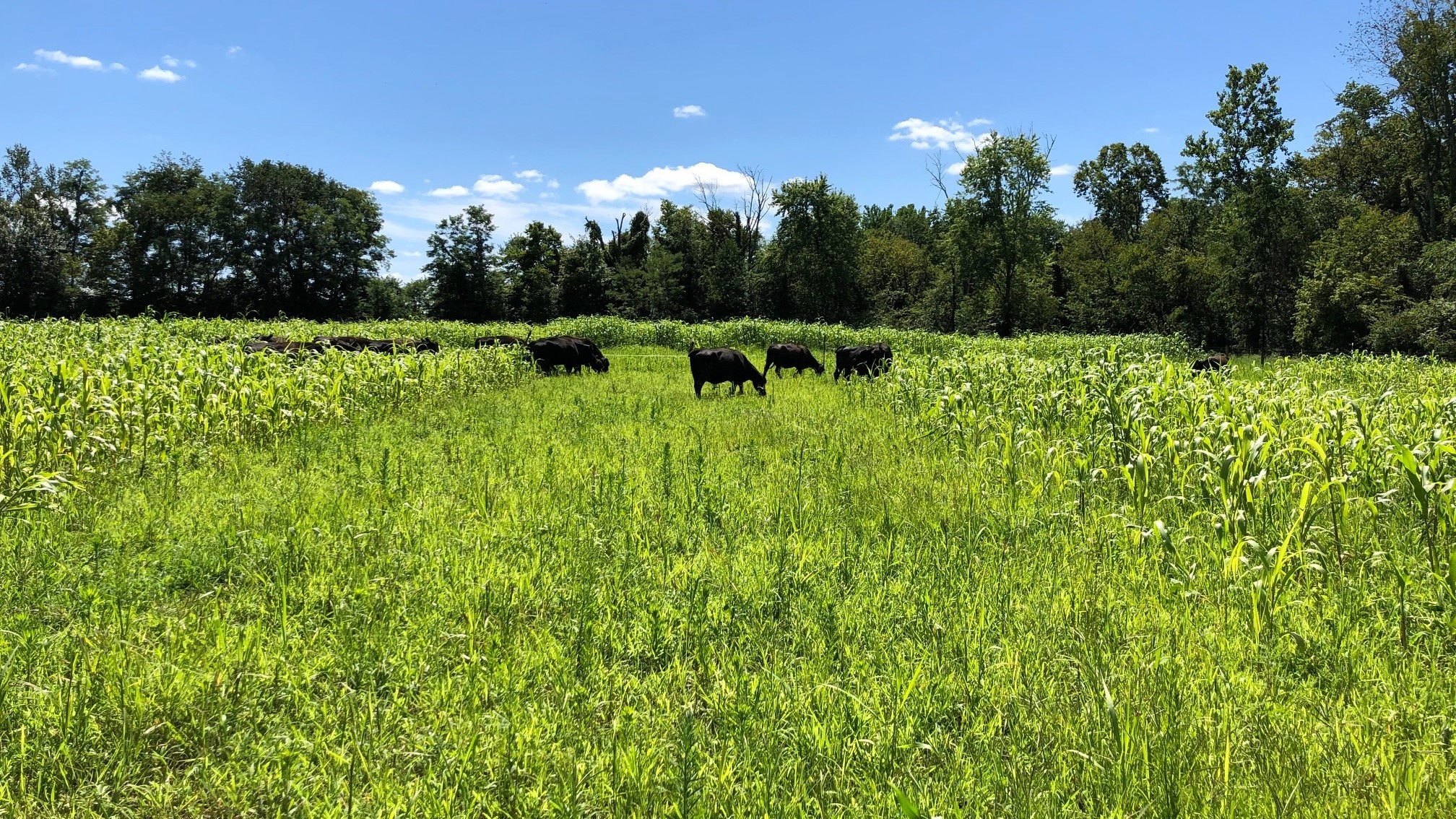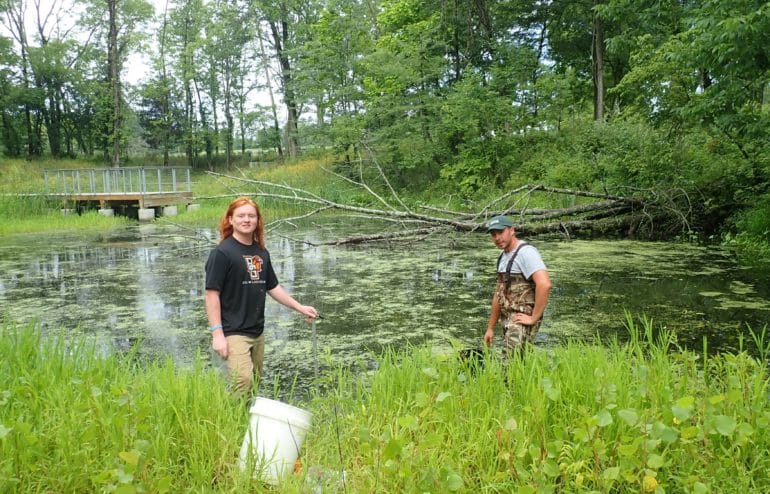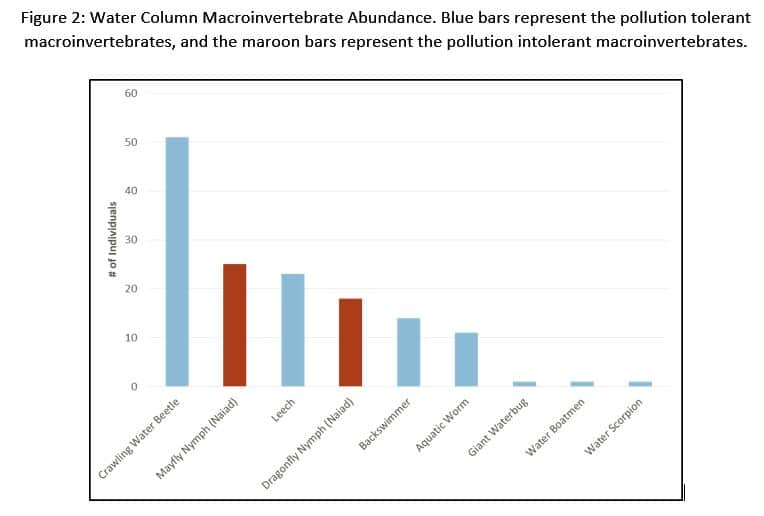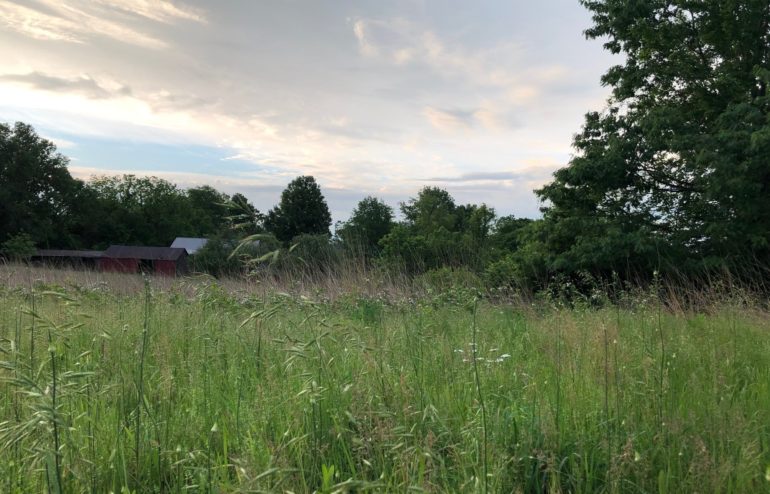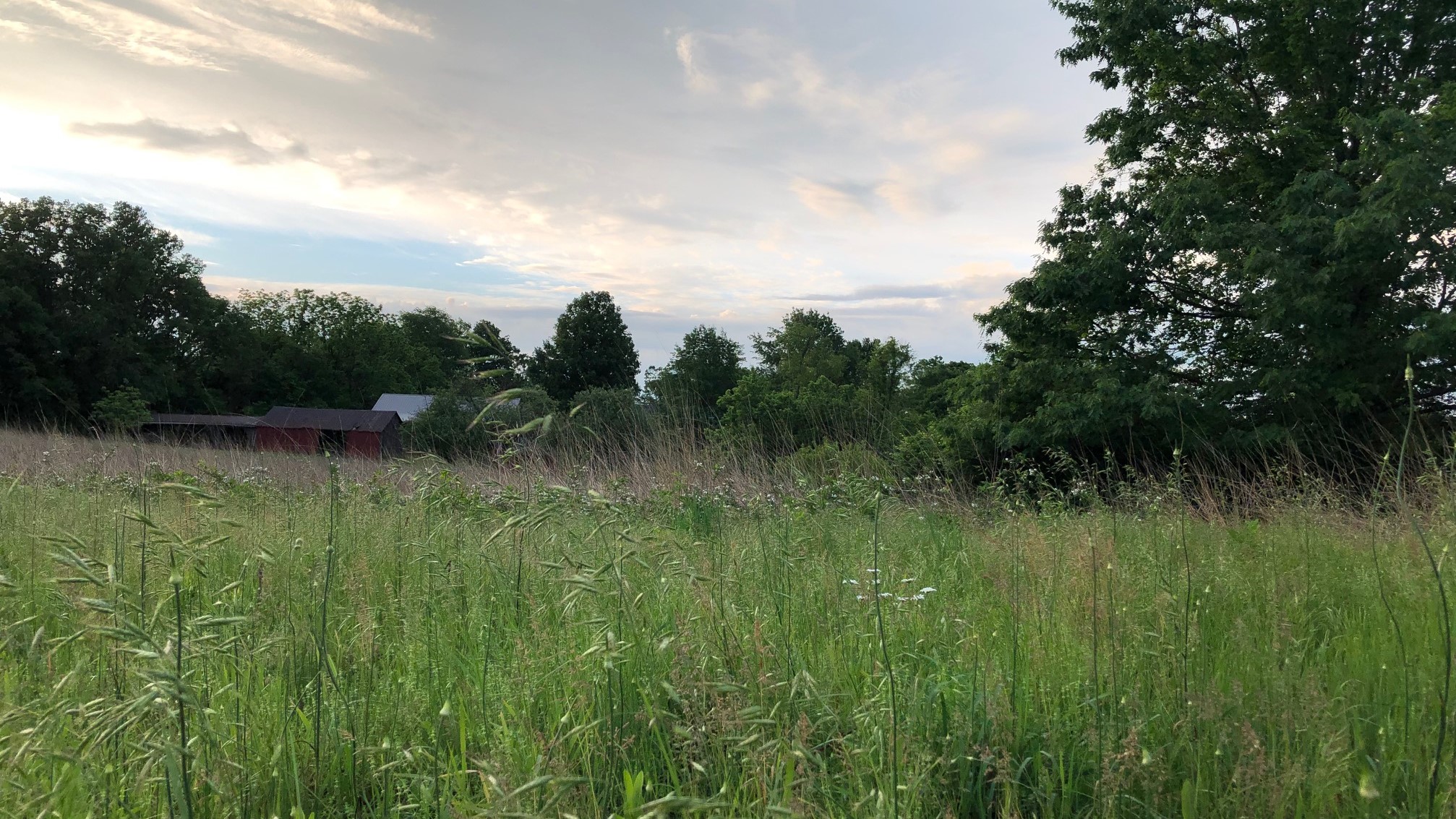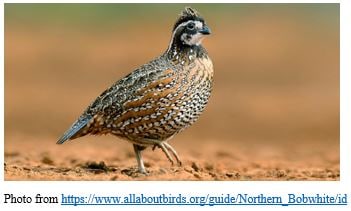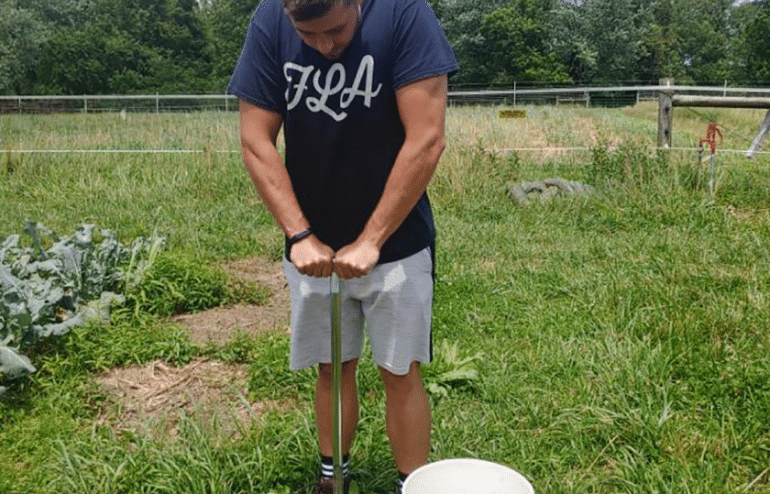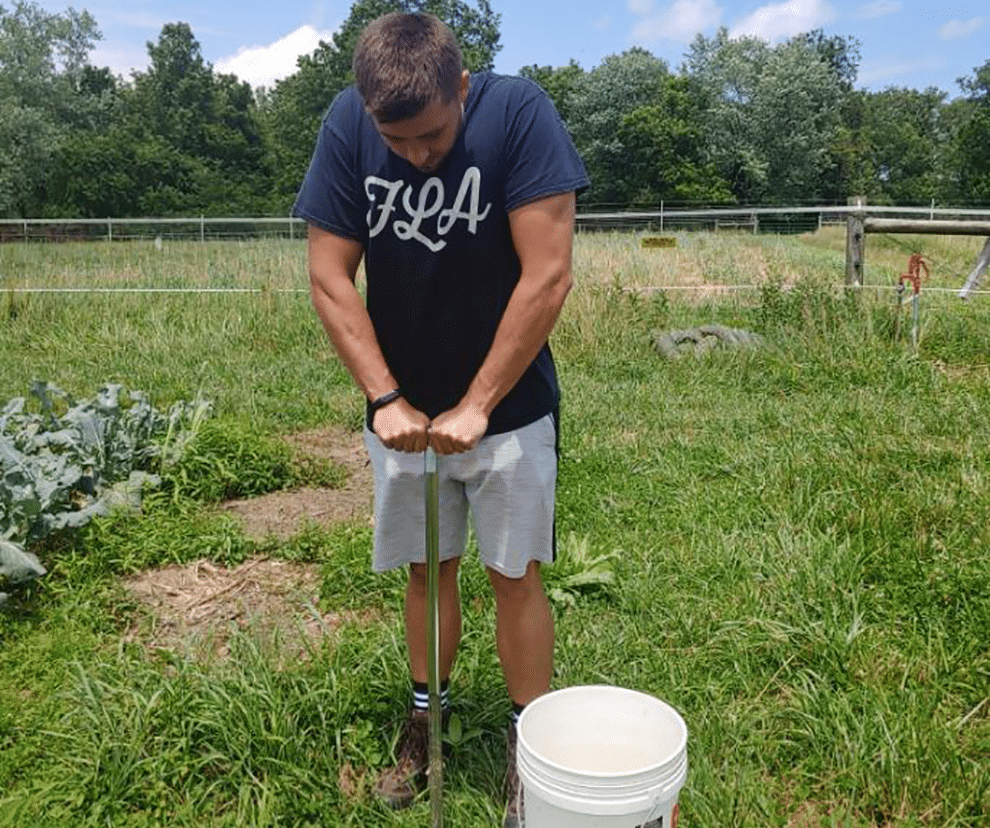At Greenacres we strive to provide education opportunities in all forms. One way we do this is internships. Our interns are responsible for helping with daily tasks and developing an independent project. This year’s intern surveyed our education wetland by collecting data on vegetation (aquatic and surrounding upland), water chemistry (pH, dissolved oxygen, nitrates), and macroinvertebrates (benthic and water column).
The surrounding area was dominated by black and brown eyed susans and partridge pea, followed by late boneset and an unknown grass species (Figure 1). There were a total of 54 species identified and 18 of which were planted or seeded. The 18 planted or seeded species had the highest densities and had a very successful establishment. Due to sampling timing, it is likely that some planted and seeded species had already bloomed or were not in season yet. Consequently, sampling in multiple seasons will be needed to help capture the wetland as a whole.
We really enjoyed the macroinvertebrate sampling portion of this project. We collected data on benthic (bottom) and the water column macroinvertebrates using a 10 inch diameter stove pipe. Macroinvertebrates are good indicators of water quality and overall wetland health, so sampling these is a must! The majority of what we found (leaches, water crawling beetles, etc.) were pollution tolerant species, but we had two groups (mayflies and dragonflies) in high abundance that are pollution intolerant (Figure 2). These data showed that our wetland can support a diverse population of macroinvertebrates and is in good health. As we continue to sample the wetland, we will make necessary changes to keep it thriving for our education programs.
–Chad G.
